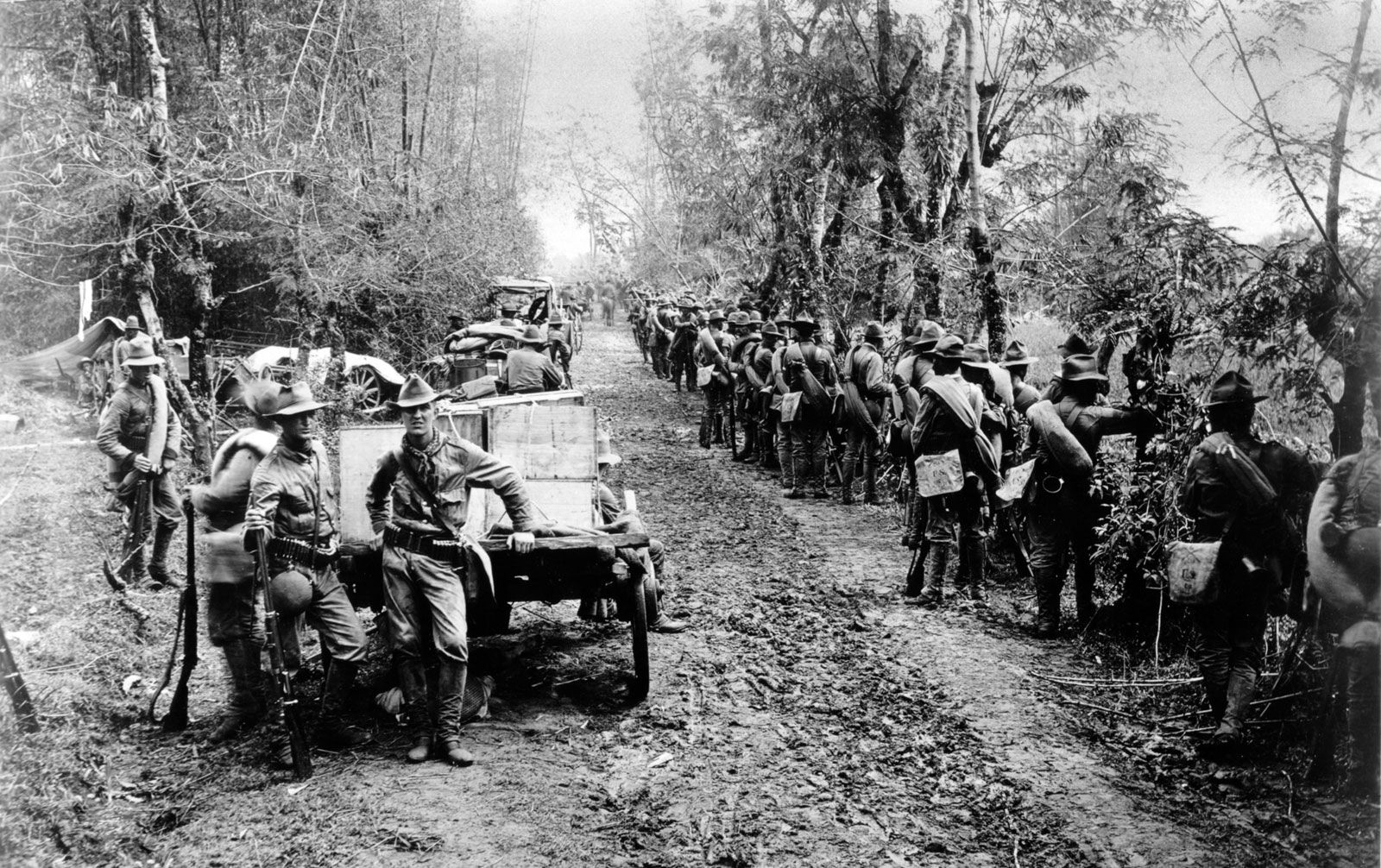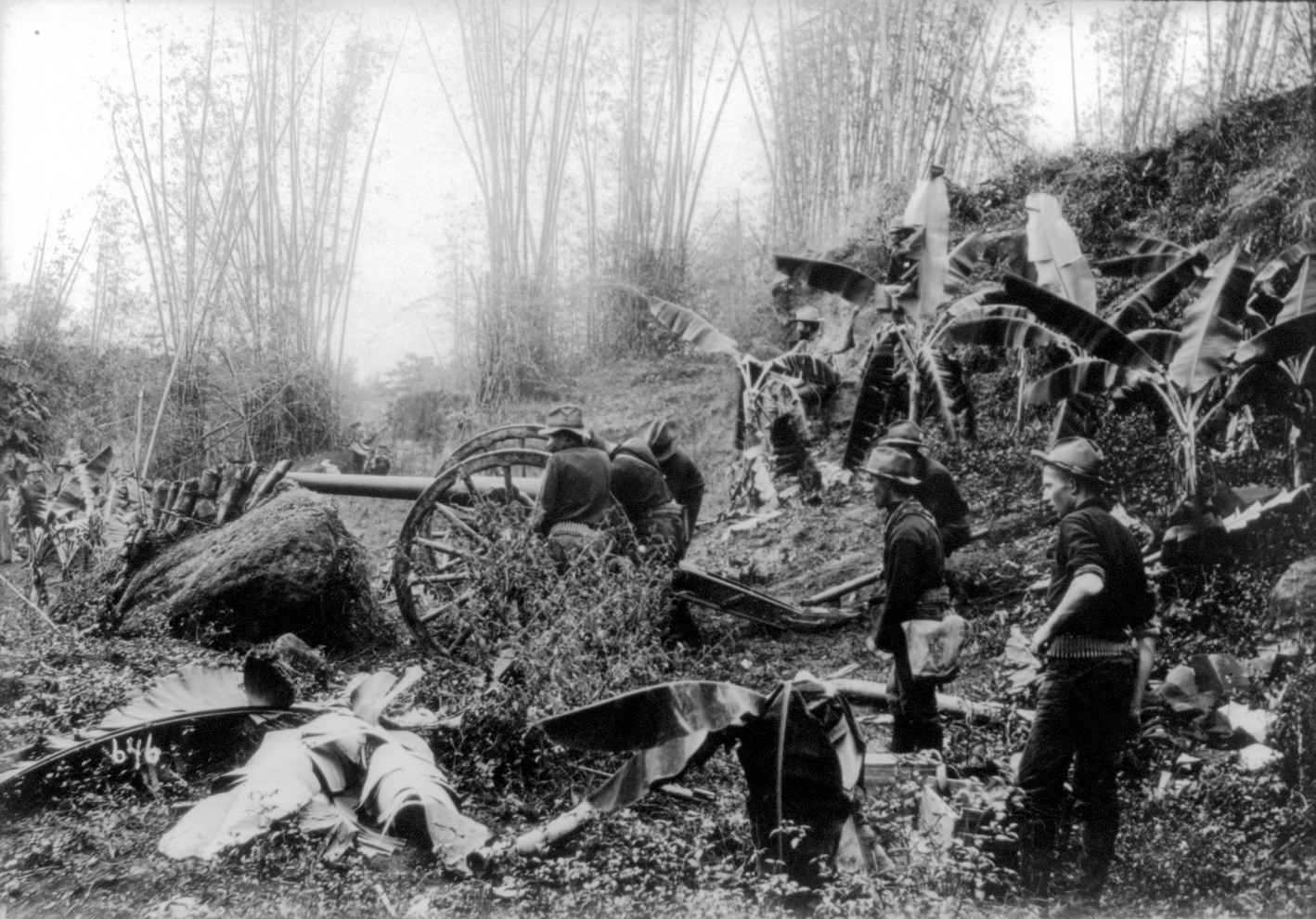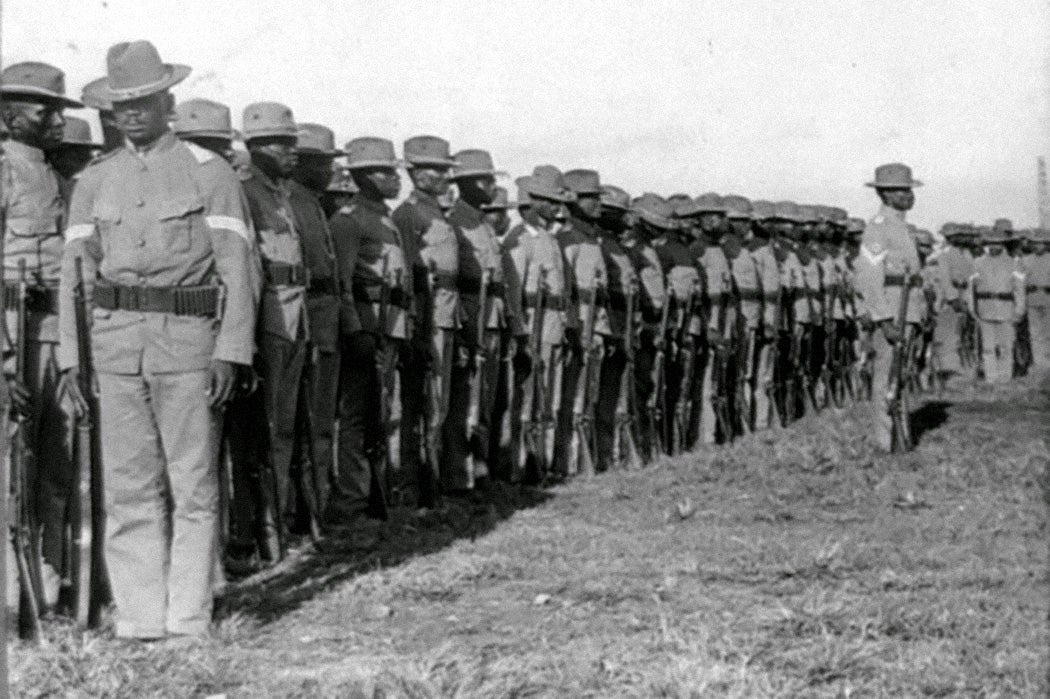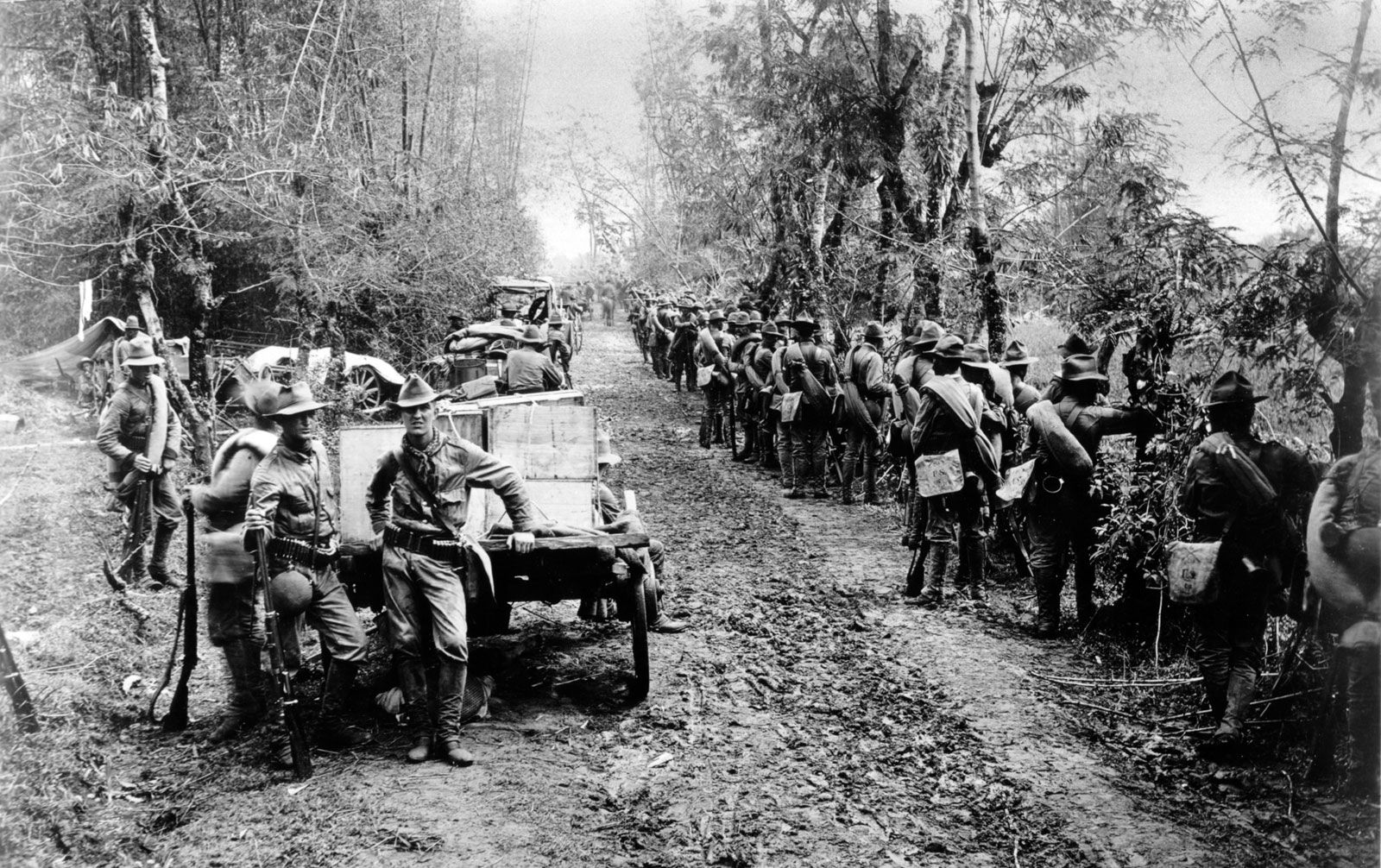The dawn of the 20th century witnessed a forgotten conflict that would reshape the destiny of an entire nation. Imagine a struggle so intense, so brutal, that it would forever alter the relationship between the Philippines and the United States.

American troops in the Philippines during the Philippine-American War. Credit: Britannica
In the wake of the Spanish-American War, the Philippines found itself at a critical crossroads. The year 1898 marked a pivotal moment when the United States purchased the Philippines from Spain for $20 million, setting the stage for a conflict that would challenge the very notion of colonial expansion. Emilio Aguinaldo, a passionate Filipino nationalist, stood at the forefront of resistance against this new form of imperial control.

Group of Filipino insurgents during the Philippine-American War. Credit: Britannica
The war erupted with shocking intensity. American forces, equipped with superior weaponry and military technology, faced a determined Filipino resistance that refused to surrender its dream of independence. The conflict quickly transformed from conventional warfare to a grueling guerrilla struggle that tested the limits of military strategy and human endurance.

Manila in 1899 during the Philippine-American War. Credit: Wikimedia Commons
Brutal Tactics and Human Suffering
The Philippine-American War revealed the darkest aspects of colonial warfare. American military tactics included reconcentration policies that devastated Filipino civilian populations. Entire communities were displaced, with thousands of innocent lives lost in a conflict that would become one of the most overlooked chapters in modern history.
Technological Disparity and Resistance
U.S. military superiority was overwhelming. Advanced weapons and strategic advantages seemed to seal the fate of Filipino fighters. Yet, Aguinaldo’s forces demonstrated remarkable adaptability, employing guerrilla tactics that challenged the traditional understanding of warfare. Their resistance became a testament to the human spirit’s resilience against seemingly insurmountable odds.

The Jim Crow Army in the Philippine-American War. Credit: JSTOR Daily
A Legacy of Complexity
The war’s aftermath was profound. The United States established a colonial administration that would last until 1946, fundamentally transforming Philippine society. This period of occupation left deep psychological and cultural scars that continue to resonate today.
International Perspectives and Lasting Impact
Global reactions to the conflict were mixed. While some condemned the American actions, others saw it as part of the broader imperial ambitions of the time. The war raised critical questions about colonialism, national sovereignty, and the ethics of military intervention.
Reflection and Historical Significance
Today, the Philippine-American War stands as a powerful reminder of the complex dynamics of colonial expansion. It challenges us to look beyond simplified narratives and understand the nuanced human experiences that shape historical events.
As we reflect on this forgotten struggle, we are reminded that history is never black and white. The stories of resistance, survival, and resilience continue to speak to us, urging us to understand the profound human cost of imperial ambitions.
References:
Encyclopedia Britannica – Philippine-American War – link
JSTOR Daily – The Jim Crow Army in the Philippine-American War – link
Categories: American History, Asian History, Colonial History, Military History, War and Conflict, War History
Tags: American Imperialism, colonial history, Emilio Aguinaldo, Filipino Resistance, Historical Wars, Military Conflict, Philippine-American War
Religion: Multiple
Country of Origin: Philippines, United States
Topic: Military History
Ethnicity: Multiple


